Climbing Mount Kilimanjaro is a physical undertaking, so you should prepare yourself accordingly with a Kilimanjaro training program.
Being in good shape is important in many respects. Obviously, strong, conditioned legs make it easier to walk uphill and downhill for sustained periods of time. General aerobic fitness allows the body to function efficiently with less oxygen. And a fit body is more likely to withstand the stress of consecutive days of hiking and camping. Finally, a positive mental attitude can work wonders for you when fatigue and doubts arise.
How Fit Do I Need to be to Climb Kilimanjaro?
That’s a difficult question to answer because it’s different for every individual.
We know there are some who didn’t train much and fared very well. Then there are others who engaged in a lengthy, disciplined training program and succumbed to the altitude in a few days. Marathon runners have told us that climbing Kilimanjaro is the hardest thing they’ve ever done. While couch potatoes said it was easier than they thought it would be.
The best advice we can give is to get yourself in the best hiking shape.
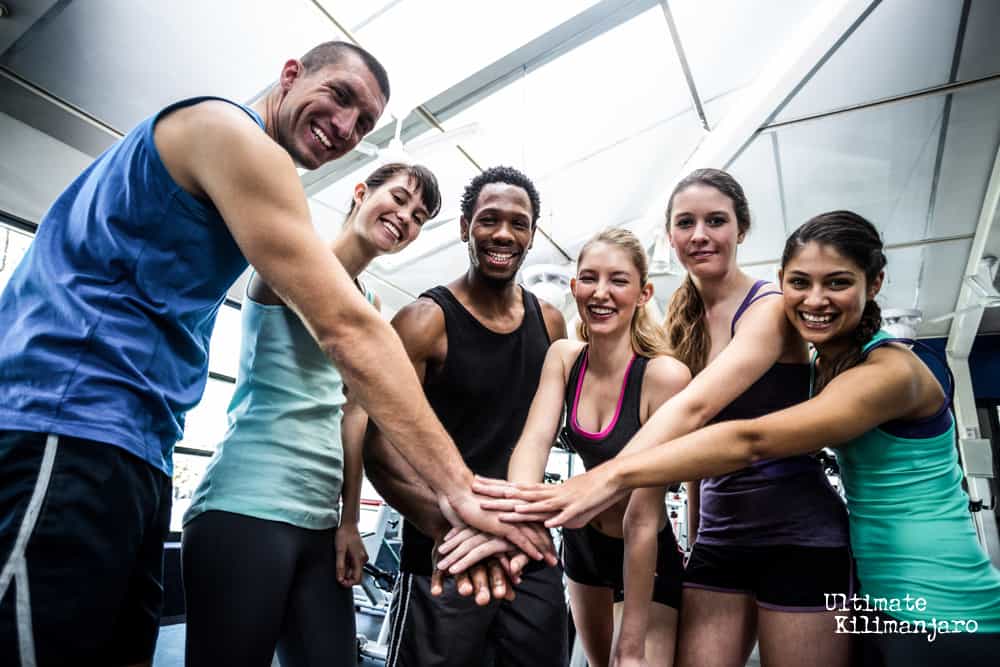
In a survey we administered, on a scale of 1 (easy) to 10 (difficult), respondents rated their climb with an average difficulty of 7. So take the climb seriously and train adequately, as described below. The mountain is a big unknown, and you won’t know with certainty how you will react until you are there.
Hiking is the Best Exercise to Prepare for Kilimanjaro
There are training regimens on other operator’s sites which entail strict, extensive, cross-training programs, featuring hiking, running, biking, swimming, weight training, etc. Do not be alarmed by this. Those programs are excessive and unnecessary.
To sufficiently prepare for climbing Kilimanjaro, the best and perhaps only exercise you need to do is hiking – period. After all, that is what you will be doing on the mountain. Ideally, you should try to hike as much as possible on hills or mountains to simulate climbing Kilimanjaro.
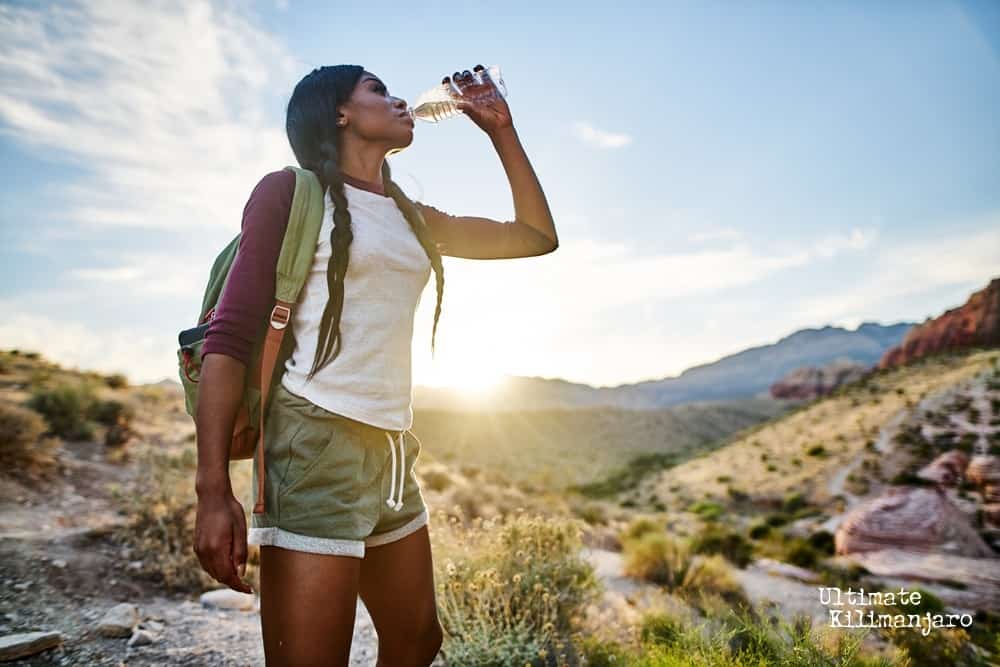
Remember that on Mount Kilimanjaro, you will walk slowly for prolonged periods, and carry probably no more than 20 lbs. in your day pack (usually it’ll be closer to 15 lbs.). Therefore, in your training, it is better to increase the time interval/distance and keep a slow pace than to shorten the time interval/distance and increase the pace.
(But if you’ve never hiked before, you should start with short time intervals, a slow pace, and no weight in your day pack and then gradually increase all of the above as your fitness level improves.)
What Kind of Hikes Should I Do to Train?
We recommend training three times a week, for at least one hour per session, at a minimum. The distance, duration and elevation gain of your sessions are mostly going to be dictated by what kind of trails are accessible for you in your area. An ideal trail would be a few miles with a nice uphill section that you could finish in an hour or so. Try to find something that is convenient for you so you can schedule regular training sessions and track your progress.
Try to find the time to do longer day hikes as well. This is superb training. A solid day hike would be a four to six hour hike with moderate elevation changes (~1,000 ft/305 m) while carrying a 20 lb. pack. But if you can do harder trails, then by all means go for it.
What if I Don’t Have Trails to Train On?
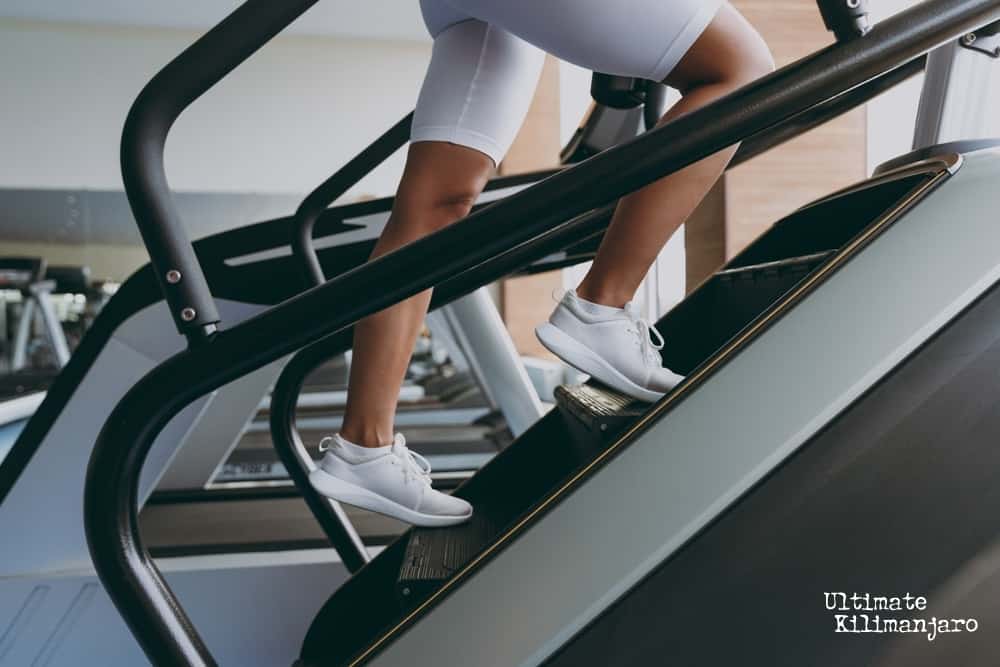
For those who do not have access to trails, the next best option is to train on stairs. You can also train very productively on a stair master machine. Remember that the goal is to simulate climbing Kilimanjaro, so wear your pack and go at a slow pace for a long time. We recommend climbing stairs or using a StairMaster for 1-2 hours, at 30-45 steps per minute while carrying a 20 lb. pack.
Try to Improve Your Vo2 Max
Vo2 max is a measurement of one’s aerobic capacity or cardiovascular fitness. Specifically, it is the maximum amount of oxygen your body can use during exercise. The “V̇” stands for volume, “O2” for oxygen, and “max” for maximum.
At high altitude, the lack of oxygen causes your body to work harder. Your Vo2 max decreases by about 3% for every 1,000 feet above 5,000 feet in elevation. That means on the summit of Kilimanjaro, your Vo2 max is diminished by about 45%! This is why it doesn’t take much activity for you to become out of breath on the mountain. You aerobic capacity is cut in half.
Therefore, to perform well on the mountain, it’s important to have a good Vo2 max to start with. Having a high Vo2 max means that your body is better at taking oxygen from the air and delivering to your muscles. You can exercise for longer and at a higher intensity, with less effort and less fatigue. On the mountain, even with the effects of altitude, you’ll be able to hike at a reasonable pace and sustain it for a long period of time.
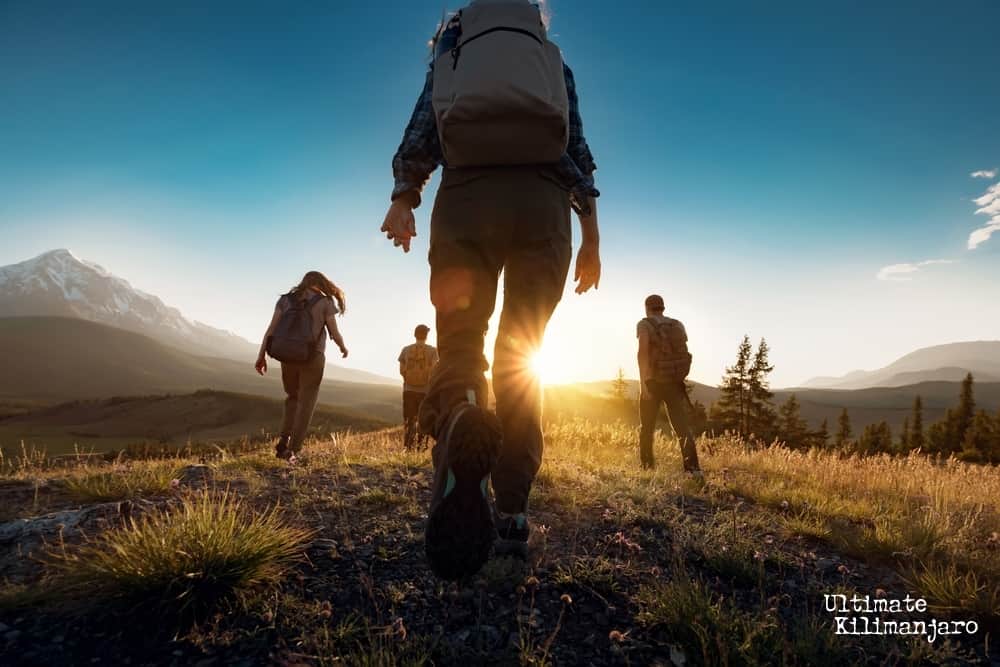
If you are aerobically fit, you probably have a good Vo2 max already. But improving your Vo2 max will make physical activity at altitude easier. To improve your VO2 max, perform steady-state cardiovascular exercise, like hiking. Steady-state cardio is low to moderate intensity for an extended period.
Do I Need to Do Any Other Exercises?
As for the other types of exercise, we can confidently say that you don’t need them.
Focus on hiking. If you are already getting plenty of hiking in, then you can add other types of exercise as a secondary or supplemental activity. But these other activities should not replace your hiking training.
If you decide to cross train, then we would suggest doing these. Running or interval training, to further improve cardiovascular fitness and aerobic capacity, and weightlifting, to gain more strength in your legs.
High intensity interval training, known as HIIT, consists of alternating short periods of high-intensity exercise with rest. Studies have shown that a combination of interval training and steady-state cardio can improve VO2 max better than continuous steady-state cardio alone.
Test Your Gear While Training
It is imperative that during Kilimanjaro training, you wear the boots that you intend to climb with so that they are sufficiently broken-in (to prevent blisters). Also, you should wear the day pack you intend to carry so your shoulders/back/hips get used to the points of contact and weight (to minimize chafing and soreness). While you’re at it, try wearing all your other gear – baselayers, trekking pants, caps, etc. – while you train. If some piece of gear doesn’t work for you, it’s better to know now rather than on the mountain.
How Long Do I Need to Train for Kilimanjaro?

You should start training for climbing Kilimanjaro at least two months prior to your departure.
However, this recommendation changes significantly based upon your current fitness level and hiking ability. From our experience, we can group our clients into three general categories.
1. Active Hikers
These people are avid hikers or backpackers. They may or may not have experience at high altitude, but they’re generally aware of how their body responds to hiking uphill and downhill, the pace they can maintain, and how to refuel and recover.
Active hikers probably do not need to change much in order to get ready for Kilimanjaro. They’re already in good hiking shape, so training is about getting in better hiking shape. For them, we would suggest doing some harder hikes and long day hikes with big elevation gains. Basically, turn up the intensity, distance and duration to get even stronger.
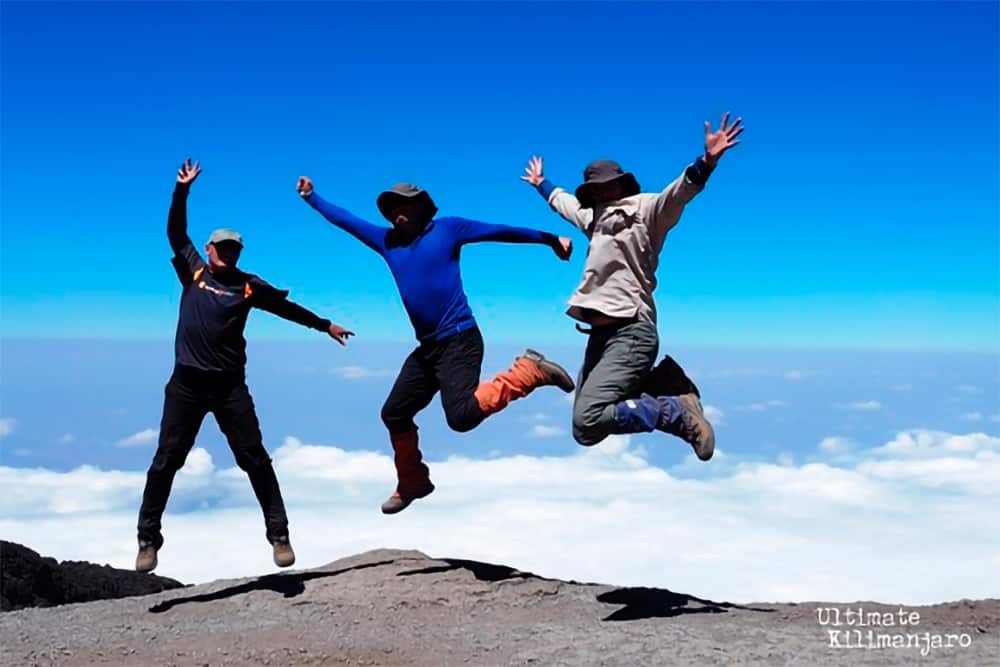
2. Active Non-Hikers
These are your average healthy people who have a normal exercise regimen. They might go to the gym a few times a week to lift weights, do Crossfit, or take cardio classes. Or they might be runners, swimmers or bikers. They’re considered to be fit people. But they don’t hike.
Active non-hikers are in good shape, but are probably not in hiking shape. So the goal for them is to get their bodies to be more suited for climbing Kilimanjaro. Therefore, they should shift their training away from their usual exercise to hiking. We would recommend this group train for more than two months, perhaps three to six months, depending on the starting point for cardiovascular endurance.
3. Non-Active People
This is essentially everyone else. This is your typical sedentary individual who does not exercise on a regular basis. If this describes you, don’t worry! We have guided plenty of people in this situation to the top without any significant problems. But, we don’t want to sugarcoat anything either. You’ll have to get in shape to have a fair chance at success.
Non-active people should start training early. We suggest training six to 12 months for your climb, gradually improving your fitness. Be careful not to overdo it as injuries are a big setback. Begin with light workouts with plenty of rest in between sessions and slowly ramp up as your trip date approaches. This group can incorporate walking, jogging and weight training as the initial goal is to achieve decent overall fitness first. Then for the latter half of the total training period, they can transition to specializing on hiking training.
For everyone, the longest/hardest workouts should be performed two to four weeks before departure. During the last two weeks, you should taper off your training and in the final days, rest so that your body has time to recover before your actual climb. At this point, it’s more important to stay healthy and injury free, than to get a few more sessions in.

Live a Healthy Lifestyle
Physical training is just one part of getting in shape.
If you live an unhealthy lifestyle, use the climb as your motivation to change. In addition to exercise, you can:
- Eat a balanced, whole food diet
- Cut out processed foods
- Stay well hydrated
- Get enough sleep
- Limit your alcohol intake
- Don’t smoke
- Reduce sitting and screen time
- Nurture your social relationships
- Take care of your mental health
One of the best motivators for change is to have a goal in mind. So, if you’re thinking about climbing Kilimanjaro but have reservations about getting in shape for it, by booking a Kilimanjaro climb, you’ll have a time, place and event to get ready for. When a trip is booked, it’s no longer hypothetical, it becomes real. And then, you’ll be excited to act, to get to the gym, to get outside, and to make things happen.
Recent Training Blog Posts
- Don’t Be Scared of Climbing Kilimanjaro
- 12 Things You Need to Know Before Climbing Kilimanjaro
- 11 Ways to Boost Your Hiking Endurance for Climbing Kilimanjaro
- Can Training with an Altitude Mask Help Me Climb Kilimanjaro?
- 10 Tips for a Successful Climb on Mount Kilimanjaro
- Can an Unfit Person Climb Mount Kilimanjaro?




















































